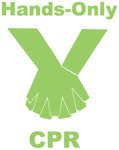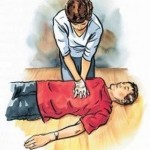Studies have shown that one of the biggest fears associated with giving adult CPR in emergency situations is the risk of disease transmission. Although the chances of obtaining an infectious disease while performing CPR are extremely low, it is a common worry that keeps many people from helping someone who might be suffering from cardiac arrest. Of course, even knowing that there is a low chance of transmission is still somewhat worrisome, and barrier devices such as mouth guards are not always handy when you find yourself needing to act quickly in an emergency situation. So how can you help others while also protecting yourself? The answer is compression-only adult CPR.
Compression-only adult CPR, also known as hands-only adult CPR, is a form of CPR that excludes any breathing or mouth-to-mouth contact, and focuses solely on chest compressions. Hands-only adult CPR is becoming more and more popular not only because it protects the rescuer, but also because it is a very effective life saving technique in its own right. Unlike the traditional 30:2 (30 compressions to 2 breaths) adult CPR, the hands-only technique uses continuous compressions to build up a pressure in the victim’s chest that actually aids in blood circulation. This pressure is released in 30:2 adult CPR when the rescuer stops for too long to switch from compressions to giving breaths. Hands-only CPR is also easy to teach and explain since there are no ratios or times to remember, just quick compressions until professional help arrives.
Compression-only adult CPR is an excellent technique that gives people a confidence in their abilities as a potential rescuer. Free from worrying about their own safety, anyone can now react quickly in an emergency situation with hands-only adult CPR to effectively aid victims suffering from cardiac arrest. When only seconds may hang in the balance between life and death, a confident and quick reaction to an emergency can make a huge difference.





